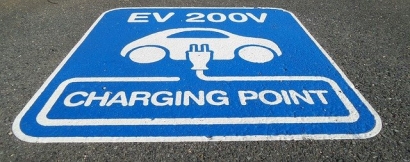
The fast-charging infrastructure is expected to be expanded further in the coming years, according to recently approved law, “Provision of extensive fast-charging infrastructure for battery-based electric vehicles”, short “Fast-charging-law”. With it, the law – approved by the Federal Ministry of Transport and Digital Infrastructure (BMVI)[1] – comprises 1,000 additional fast-charging hubs are to be built until 2023. In order to achieve set goals, a Europe-wide tender process is to be applied to ensure an efficient expansion of the planned fast-charging network with so-called High Power Charging (HPC) points with a capacity of at least 150 kW for long- and medium-distances.
The tender is planned to start in summer 2021. It is meant to develop a dense fast-charging infrastructure to meet the growing demand and number of new electric vehicle (BEV) registrations – also in peak times and in previously uneconomical locations. Overall, the market for mobile EV charging is expected to grow significantly.
EUPD Research, a market research and consulting firm specialized in renewable energies, forecasts a rather modest market growth for mobile EV charging of about €72 million for the current year. Until 2025, the annual revenue for mobile charging is expected to double on an annual basis. Between 2025 and 2030, EUPD Research analysts anticipate an annual growth of 29%.
The expected sales growth is composed of several factors. While the first generation of electric car drivers primarily consisted of homeowners with their own charging station, the share of electric mobility users in urban areas – without the possibility of private charging – is expected to grow in the future.
This group will be dependent on a local and nationwide public charging infrastructure. Moreover, further price increases are expected in the coming years due to continuously rising electricity cost and due to the need to cover the high investment costs for the charging infrastructure. In addition, more fast-charging stations will be used which may cause changes between charging rates. While today electric vehicle charging in Germany mostly takes place on normal charging stations with cheaper AC-charging rates, a higher use of fast-charging stations with more expensive DC and HPC rates is expected in the future. EUPD Research foresees DC charging accounting for about two-thirds of the revenue in 2030.
The comparative analysis of mobile EV charging rates 2021 is the third edition of EUPD Research’s annual study. It offers a detailed status quo about the market situation of mobile EV charging rates in Germany. The comprehensive analysis includes all currently available EV charging tariffs; the 15 most advantageous rates are presented and compared in detail with respect to three driving profiles.

